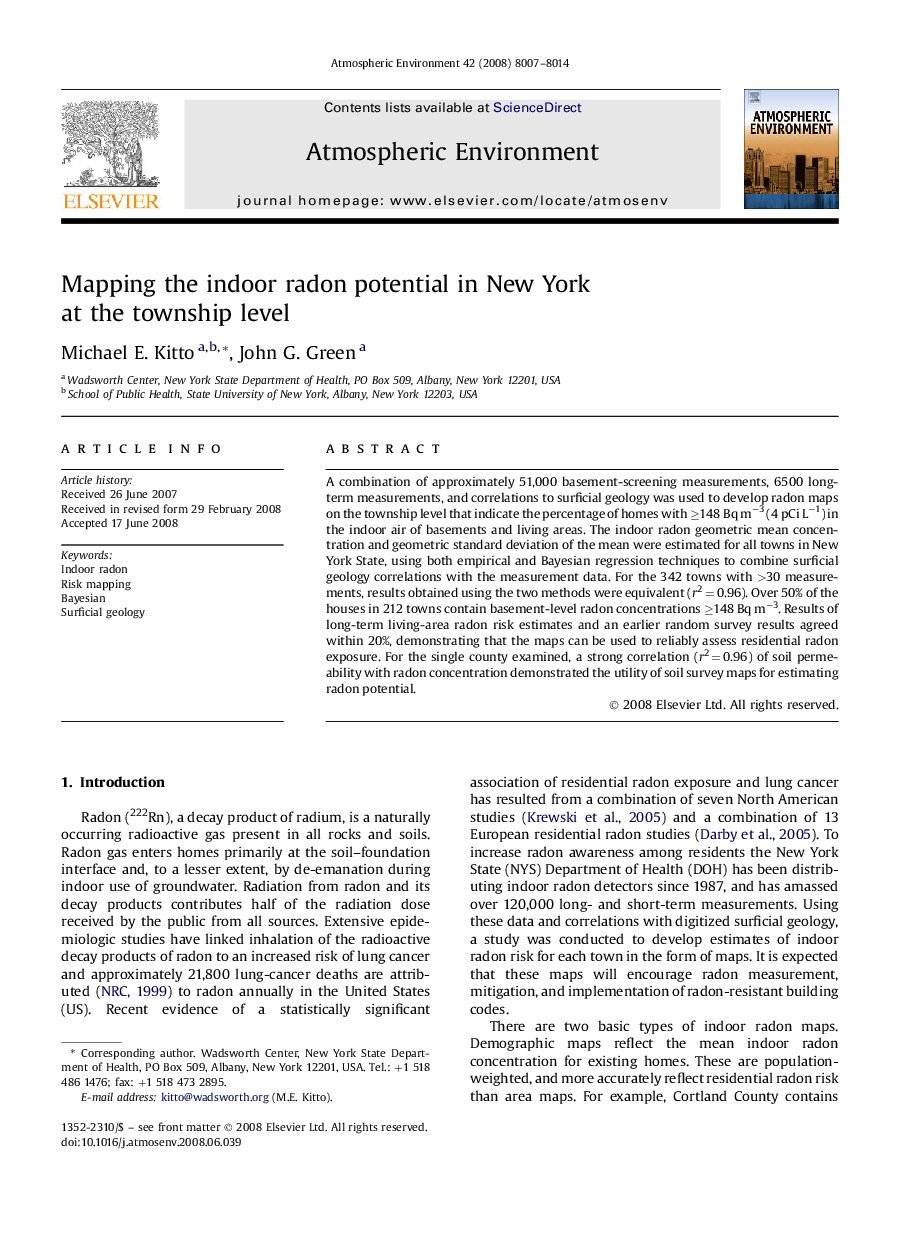| Article ID | Journal | Published Year | Pages | File Type |
|---|---|---|---|---|
| 4441509 | Atmospheric Environment | 2008 | 8 Pages |
A combination of approximately 51,000 basement-screening measurements, 6500 long-term measurements, and correlations to surficial geology was used to develop radon maps on the township level that indicate the percentage of homes with ≥148 Bq m−3 (4 pCi L−1) in the indoor air of basements and living areas. The indoor radon geometric mean concentration and geometric standard deviation of the mean were estimated for all towns in New York State, using both empirical and Bayesian regression techniques to combine surficial geology correlations with the measurement data. For the 342 towns with >30 measurements, results obtained using the two methods were equivalent (r2 = 0.96). Over 50% of the houses in 212 towns contain basement-level radon concentrations ≥148 Bq m−3. Results of long-term living-area radon risk estimates and an earlier random survey results agreed within 20%, demonstrating that the maps can be used to reliably assess residential radon exposure. For the single county examined, a strong correlation (r2 = 0.96) of soil permeability with radon concentration demonstrated the utility of soil survey maps for estimating radon potential.
